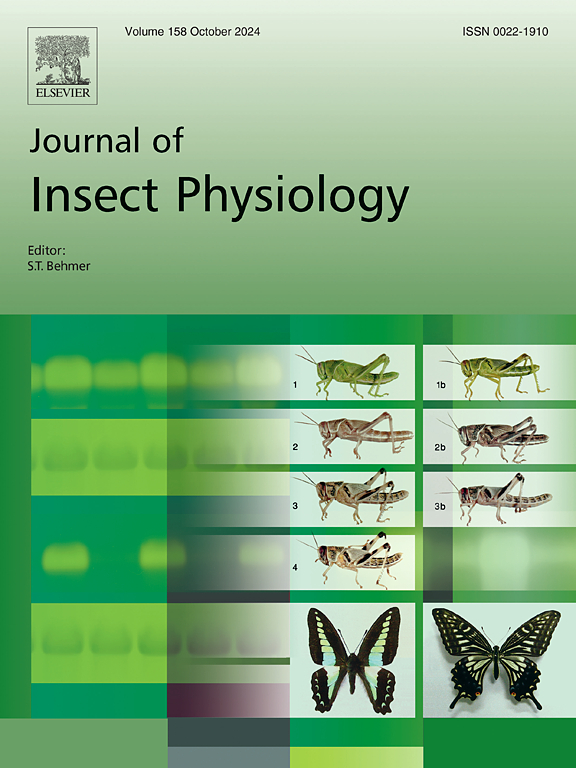Activation of the immune deficiency pathway (IMD) reduces the mosquito heart rate via a nitric oxide-based mechanism
IF 2.3
2区 农林科学
Q1 ENTOMOLOGY
引用次数: 0
Abstract
The immune deficiency pathway (IMD) is an important component of the antibacterial, antimalarial and antiviral response in mosquitoes. The IMD pathway also drives the infection induced migration of hemocytes to the heart. During an infection, periostial hemocytes kill pathogens in areas of high hemolymph flow and produce nitric oxide that reduces the heart rate. Here, we investigated the consequences of repressing the IMD pathway by silencing the transcription factor, rel2, or activating the pathway by silencing the negative regulator, caspar, in Anopheles gambiae. In uninfected mosquitoes, repression of the IMD pathway does not affect the circulatory system. However, activating the IMD pathway decreases the heart rate, and this correlates with increased transcription and activity of nitric oxide synthase (NOS), but not increased transcription of the lysozymes, LysC1 or LysC2. In infected mosquitoes, however, activation of the IMD pathway does not affect the heart rate but repression of the pathway decreases the heart rate. This latter phenotype correlates with increased transcription and activity of nitric oxide synthase, which is likely due to an increase in infection intensity. In conclusion, we demonstrate that a major immune signaling pathway that regulates periostial hemocyte aggregation, the IMD pathway, reduces the heart rate via a nitric oxide-based mechanism.

免疫缺陷途径(IMD)的激活通过一种基于一氧化氮的机制降低蚊子的心率。
免疫缺陷途径(IMD)是蚊子抗菌、抗疟和抗病毒反应的重要组成部分。IMD途径也驱动感染诱导的血细胞向心脏迁移。在感染期间,骨膜血细胞杀死高血淋巴流量区域的病原体,并产生降低心率的一氧化氮。在冈比亚按蚊中,我们研究了通过沉默转录因子rel2或通过沉默负调节因子caspar激活IMD通路来抑制IMD通路的后果。在未感染的蚊子中,抑制IMD途径不影响循环系统。然而,激活IMD通路会降低心率,这与一氧化氮合酶(NOS)的转录和活性增加有关,而与溶菌酶LysC1或LysC2的转录增加无关。然而,在受感染的蚊子中,激活IMD途径不影响心率,但抑制该途径会降低心率。后一种表型与一氧化氮合酶转录和活性的增加相关,这可能是由于感染强度的增加。总之,我们证明了一个主要的免疫信号通路,调节外周血细胞聚集,IMD途径,通过一个基于一氧化氮的机制降低心率。
本文章由计算机程序翻译,如有差异,请以英文原文为准。
求助全文
约1分钟内获得全文
求助全文
来源期刊

Journal of insect physiology
生物-昆虫学
CiteScore
4.50
自引率
4.50%
发文量
77
审稿时长
57 days
期刊介绍:
All aspects of insect physiology are published in this journal which will also accept papers on the physiology of other arthropods, if the referees consider the work to be of general interest. The coverage includes endocrinology (in relation to moulting, reproduction and metabolism), pheromones, neurobiology (cellular, integrative and developmental), physiological pharmacology, nutrition (food selection, digestion and absorption), homeostasis, excretion, reproduction and behaviour. Papers covering functional genomics and molecular approaches to physiological problems will also be included. Communications on structure and applied entomology can be published if the subject matter has an explicit bearing on the physiology of arthropods. Review articles and novel method papers are also welcomed.
 求助内容:
求助内容: 应助结果提醒方式:
应助结果提醒方式:


